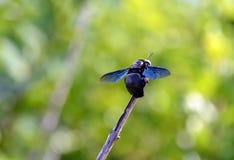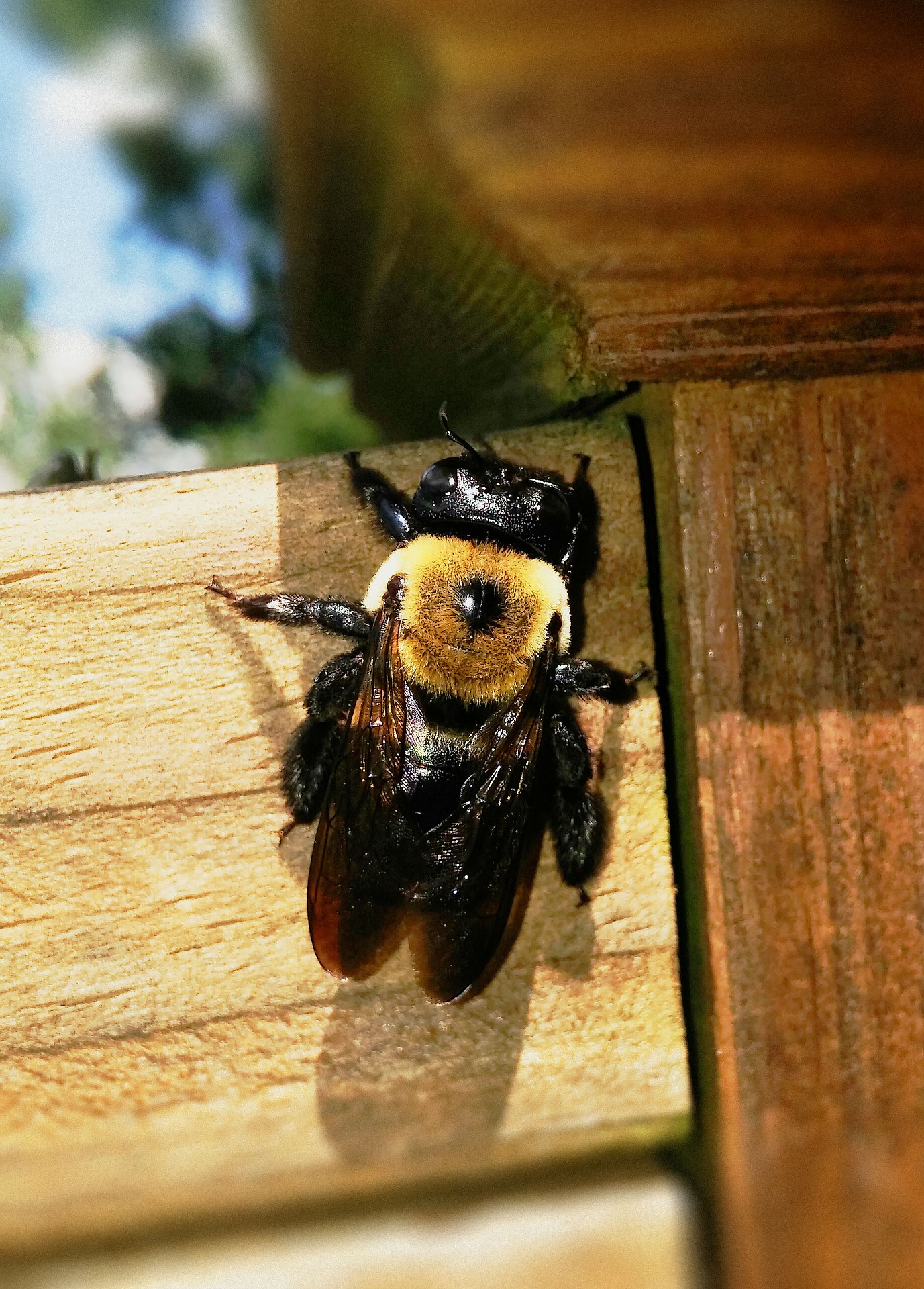

Alkali bees land on the flower, bouncing the lower petal or keel to expose the antlers and stamen for pollination. These plants are more difficult to pollinate, as the male and female parts of the flower are not exposed initially. Alkali bees are of particular importance to plants in the pea family.
Fuzzy black bee Patch#
It is possible for thousands of females to build burrows near each other if a large enough patch of salty earth is available for them to use.ĭue to their proclivity for salty soil, these bees are often found in areas that other bees cannot pollinate. The stripes are made from enameled scales.Įach female bee digs a network of tunnels for her burrow. However, alkali bees have iridescent yellow stripes on a black abdomen.

They are slightly smaller than honey bees, and are similar in appearance. This type of ground bee is also found in salt flats. They are typically found in the western and southwestern United States. They nest in the ground, but have a preference for salty soils. This species of bee belongs to the family Halactidae, and is also a type of sweat bee. Because of this, farmers often raise them for their help with crop growth. Many ground bees are polylectic, meaning they will collect pollen and nectar from multiple plant species. The clusters of small holes may be unsightly, but these underground colonies aerate the soil and are not harmful to plants or lawns. Most species of ground-dwelling bee are considered semi-social because they build burrows near each other. The young bee will eat the pollen until it is time to exit the burrow the following year. Most types of ground bee then fill these burrows by laying an egg, pushing in a ball of pollen mixed with nectar and sealing the hole. These burrows are at least 6 inches deep into the earth, and may have vertical, horizontal or slanted tunnels depending on the species. Larvae will develop into adult bees while underground, waiting until the next year’s mating season to dig their way out.ĭuring mating season, each female will dig a burrow. The female bees also serve as worker bees, building the burrows and collecting food for the larvae. Because they are solitary bees, there is no queen bee. Mating season is March to May, with most species emerging from their underground burrows in March and early April. People typically notice the males buzzing in large groups during mating season in the spring, or by seeing large numbers of small holes grouped near each other in patches of open ground. They all belong to the same order, Hymenoptera, but are in different families. They can be black and yellow, blue, purple, red or green and are often metallic-looking. They are typically one-half of an inch long or smaller, though some may be up to three-fourths of an inch long. Most species of ground bee are similar in size. Multiple bee species are referred to as ground bees, including alkali bees, bumble bees, leafcutter bees, mining or digger bees and sweat bees. While they often burrow near each other, only one female bee digs each burrow. Instead of building one shared hive, ground bees burrow in the ground, or appropriate the abandoned holes of rodents and other small mammals. However, they are more solitary and prefer a semi-social environment. Like their aboveground counterparts, ground bees gather pollen and nectar. However, there are several bee species commonly referred to as ground bees, which make their home in the ground. The yellow-sided Tachina fera are easily confused with Wool carder bees.When most people think bees, they think of aboveground hives or perhaps swarms of bees hanging in trees. Tachina grossa, one of Britain’s largest flies, could definitely sneak into a party for Black bumblebees. You'd be forgiven for mistaking these big, bristly things for bees. Eyes that cover most of their head (sometimes meeting in the middle).But you can submit your sightings to Bee-fly Watch. Spotting these insects won't win you any points during the Great British Bee Count. Then their young, or "larvae", feast on the bees' pollen stores. It's permanently stretched out which is a massive give away – bees tuck theirs in when not feeding.īee-flies fling their eggs into holes dug by Mining bees. You absolutely can't miss their long proboscis or ‘tongue’.


 0 kommentar(er)
0 kommentar(er)
